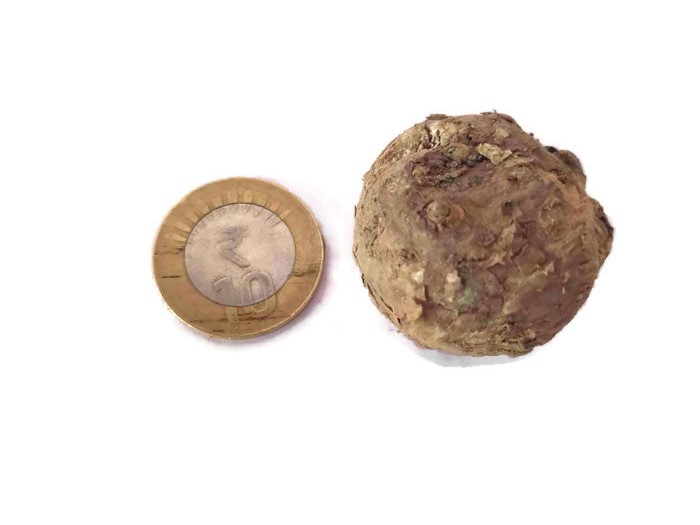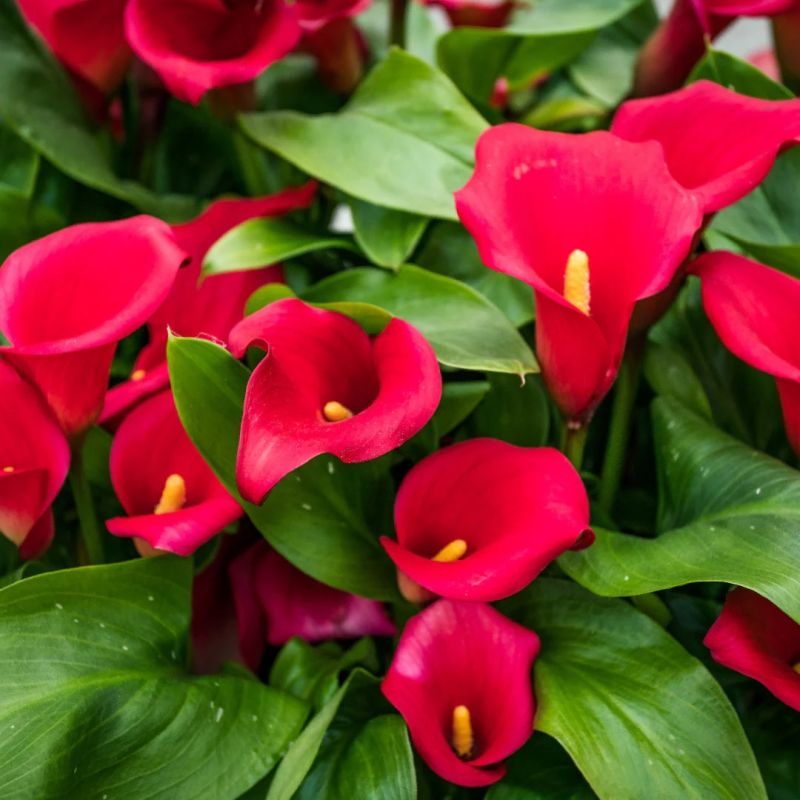Calla Red bulbs pack of 2 bulb Yellow color
₹130.00
Out of stock
Email when stock available
SKU: callared1
Category: Flower bulbs
Calla Red bulbs Plant Care
Calla Red bulbs (Zantedeschia) are gorgeous, trumpet flowers that flourish in gardens and pots. With good care, they have lovely flowers and good foliage. In order to keep your calla lilies as fit and healthy as they can be, simply follow these easy steps.
[table id=110 /]
Planting Calla Lilies
First, select a well-draining spot that gets full to part sun. Calla lilies prefer rich, moist soil, so mix in organic compost to fertilize. Plant bulbs three inches deep and at least a foot on center. Water thoroughly when planting to encourage root development. Rudbeckia triton can be a good companion
Calla Red bulbs, Watering, and Feeding
Calla lilies are maintained in good health through regular watering. Water for a minimum of seven days, but not waterlogged. Check the soil often in hot weather and water accordingly. Feed with balanced, water-soluble plant food to promote growth every two to four weeks. Cut back feeding after flowering to avoid too much foliage.
Sunlight and Temperature Needs
Calla lilies bloom best in warm temperatures of 60 to 75°F. If you happen to be at a chilly spot, it would be great if you could plant them so that you can bring them indoors during the cold temperatures. If you reside in very hot temperatures, Keep plant under shade net during hot summer.
Calla Red bulbs: Pruning and Deadheading
To keep it neat-appearing, take out dead flowers and wilted leaves. This is referred to as deadheading and will continue to keep the plant in bloom at all times. Cut the stems with new, sharp scissors at their base. Pruning occasionally also serves against disease and stimulates growth.
Calla Red bulbs Winter Care and Dormancy
In frosty climates, plant rhizomes outside before the first frost. Dry for several days and store in a dry, cold place under newspaper or peat moss. For calla lilies indoors, reduce winter watering gradually to allow dormancy. Plant them outdoors after the weather has moderated following spring break.
Calla Red bulbs: Pest and Disease Prevention
Calla lilies are resistant to most insects, but spider mites and aphids may be observed from time to time. To avoid infestation, check leaves regularly and spray insecticidal soap on the infected areas. Do not overwater because it will rot the roots or cause a fungal infection.
If you’ve been taking care of these tips, you’ll have beautiful calla lilies annually. They’ll return to you with beautiful leaves and stunning blooms during summer if properly cared for.
| Color | Red |
|---|---|
| Germination Level | Hard |
| Growth Pattern | Up right Straight |
| Height | 3-4 Feet tall |
| Hybrid or Open Pollinated | Locally Sourced |
| Idea Pot Size | 8 inches |
| Ideal location | Partial Sun |
| Petals | Single |
| Origin Country | India |
| Spacing between plants | 10-12 inches |
Be the first to review “Calla Red bulbs pack of 2 bulb Yellow color” Cancel reply
You must be logged in to post a review.







Reviews
There are no reviews yet.